What is on Your Nightstand?
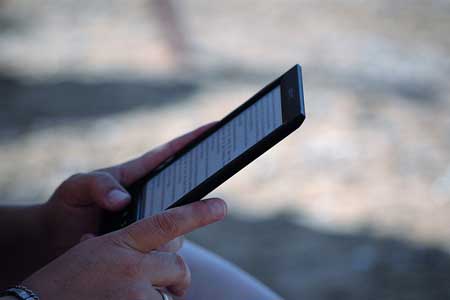
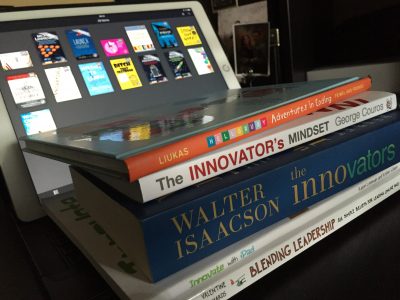
When I received my first e-reader (a Kindle, first generation), I started thinking about my reading habits and how the onset and popularity of digital books are and have changed. I wrote about this on my blog Langwitches in posts titled, So What About Books, My World of Reading, Part I and Part II and My (and my mother’s) Life as a Reader. It is interesting to see how much has changed again, since I wrote these posts in 2009 and 2011 respectively.
I used to have one or (at the most) two books on my nightstand. I started a book, then finished it before I began the second book. The second book was only there to make sure, I did not run out of reading material, before I was able to make another visit to the local book store.
When I look at my nightstand now, there are a pile of books, plus my iPad with the Kindle app on it. I don’t seem to read my (non-fiction) books from cover to cover anymore. I will read snippets, a chapter here a chapter there and jump from one book/author to another.
I rely on the highlights and comments I add to my digital reading to review and “get back into the swing” of the book, before I continue reading. I also have several books in both paper and digital edition. I enjoy using both versions and might read one chapter on the paper book to then continue in the digital version. I read on my iPad when I am at home and will continue on my iPhone when away.
Today I would like to point out and share with you a couple of books on my nightstand. You can see the entire pile below.
The first book is Innovate with iPad: Lessons to Transform Learning in the Classroom by Karen Lirenman and Kristen Wideen. I met Karen and attended one of her presentation at a recent conference and was simply blown away from her passion as a teacher of transforming learning for her students. The book (geared for elementary school) is full of lesson plan ideas and step-by-step directions. The reason why I recommend this book is that these are not your usual lesson plans to merely substitute with the iPad what you have done before without technology, but these ideas emphasize the the SHARING opportunities, self-assessment through REFLECTION foster META-COGNITION .Karen and Kristen help you think through ways how to AMPLIFY learning. They just use the iPad as a tool FOR learning.
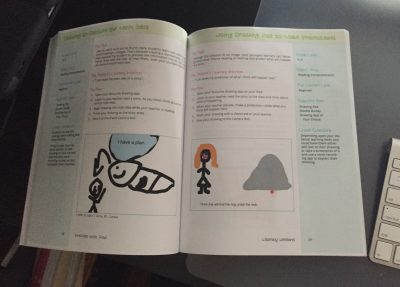
The second book, I would like to highlight in more detail, is a book that I purchased for my granddaughter, because of a keynote presentation by the author Linda Liukas Hello Ruby: Adventures in Coding
Although Elena (4 years) old might still be a little too young for the activities, we are using the book as a storybook for right now and will move into the activities when she will be a little older. I was so impressed by Linda Liukus, not only for wonderfully bubbly personality, who immediately won the hearts of the audience, but by the message she was sharing.
Tech & Learning Newsletter
Tools and ideas to transform education. Sign up below.
As a computer programmer herself, she is an advocate for girls in technology. She said:
Little girls don’t know that they are not supposed to like computers.
Her mission is to help us see the world, the way that programmers see the world:
Big problems are only small problems stuck together
Linda was able to paint us a picture about:
- a world that is not ready, meaning not finished being shaped
- technology will play a vital role in shaping that world
- kids can be part of that change
Linda compared programming to speaking a language and she reminded us that we learn language by USING it, be it programming, poetry, or the language of play. “If java script is the new lingua franca, we don’t need more grammar classes, we need more poetry classes.” She also challenged the audience to think about ways we could teach algorithms through Art for example? How can you help kids think critically about differences between humans and computers.
Also check out the website for the book.
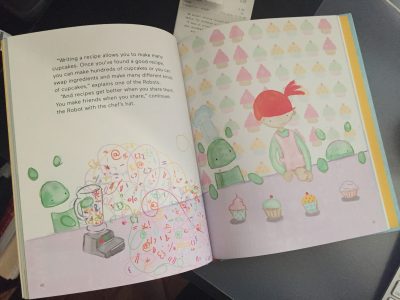
Below are the other books on my nightstand and in my Kindle app, that I am currently reading, skipping in and out of and referring to.
The Innovators by Walter Isaacson
Blending Leadership: Six Simple Beliefs for Leading Online and Off Stephen Valentine and Reshan Richards
The Innovator’s Mindset: Empower Learning, Unleash Talent, and Lead a Culture of Creativity by George Couros
On my Kindle you will find:
Who Owns the Learning?: Preparing Students for Success in the Digital Age by Alan November
The Power of Branding: Telling Your School’s Story by Tony Sinanis and Joseph Sanfelippo
Make Writing: 5 Teaching Strategies That Turn Writer’s Workshop Into a Maker Space by Angela Stockman
Hacking Assessment: 10 Ways to Go Gradeless in a Traditional Grades School by Starr Sackstein
Ditch That Textbook: Free Your Teaching and Revolutionize Your Classroom by Matt Miller
Invent To Learn: Making, Tinkering, and Engineering in the Classroom by Sylvia Martinez and Gary Stager
Making Thinking Visible: How to Promote Engagement, Understanding, and Independence for All Learners by Ron Richhart
Show Your Work!: 10 Ways to Share Your Creativity and Get Discovered by Austin Kleon
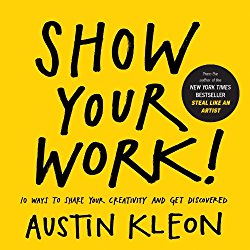
Learn Like a PIRATE: Empower Your Students to Collaborate, Lead, and Succeed by Paul Solarz
Visible Learners: Promoting Reggio-Inspired Approaches in All Schools by Mara Krechevsky, Ben Mardell, Milssa Rivard, Daniel Wilson
How To Come Up With Great Ideas and Actually Make Them Happen by Ewan McIntosh
Launch: Using Design Thinking to Boost Creativity and Bring Out the Maker in Every Student by John Spencer
Hacking Leadership: 10 Ways Great Leaders Inspire Learning That Teachers, Students, and Parents Love by Tony Sinanis and Joseph Sanfelippo
Visual Note-Taking for Educators: A Teacher’s Guide to Student Creativity by Wendi Pillar
cross posted at langwitches.org/blog
Silvia Tolisano is a Curriculum21 faculty member, author of the book Digital Storytelling Tools for Educators and founder of the Around the World with 80 Schools project. Read more at http://langwitches.org/blog.
